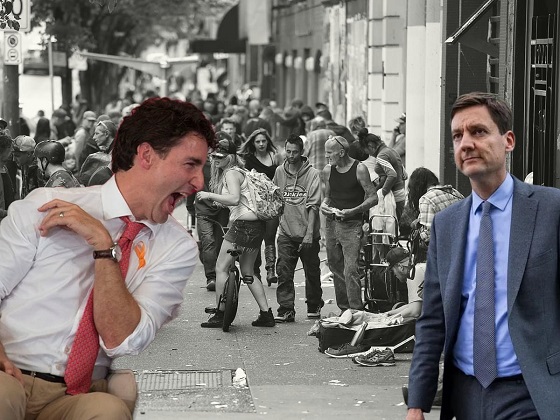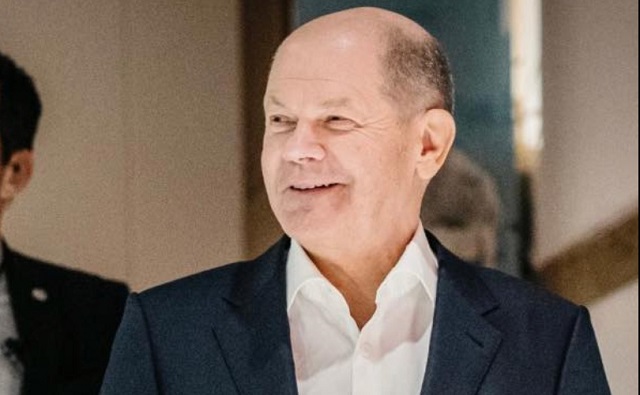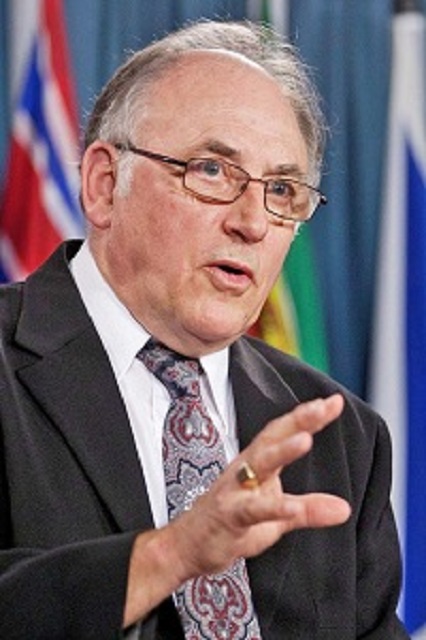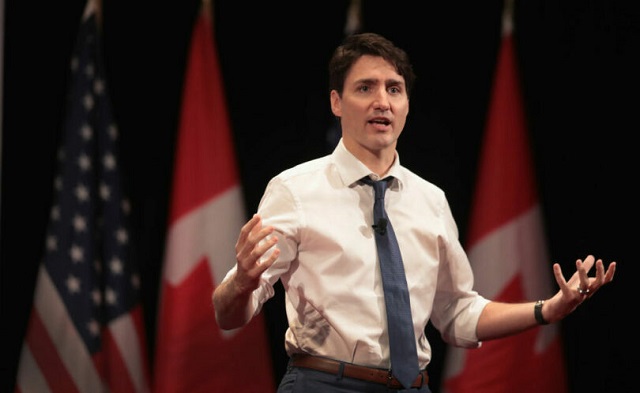Indigenous
Canada’s Indigenous Model is Not Sustainable

From the Frontier Centre for Public Policy
The stated purpose of the extra indigenous spending that has always been there, and the virtual explosion on indigenous spending since 2015 is meant to fix that problem. But these massive expenditures have now reached the point where they risk destabilizing the country.
Canada’s parliamentary budget officer, Yves Giroux has spoken out about the alarming rise in Canada’s contingent liabilities related to indigenous claims. Todays estimated 76 billion dollars is many times the 15 billion dollars it was when the Liberals took power in 2015.
This is one part only of the massive increase in spending on indigenous matters that has taken place since then.
Federal spending per indigenous person has always been much higher than spending per non-indigenous person. The higher level of spending has been justified because most indigenous people do much worse on virtually every health and social indicator than the mainstream population. Their health is poorer, and their lives are shorter.
This disparity was generally known as Canada’s “Indian problem”. That term is no longer fashionable, and the extra spending is now said to be necessary to achieve “reconciliation”. Regardless of the terms, what is clear is that since Confederation there has always existed a large rural and urban indigenous underclass that does poorly compared to the mainstream. The stated purpose of the extra indigenous spending that has always been there, and the virtual explosion on indigenous spending since 2015 is meant to fix that problem. But these massive expenditures have now reached the point where they risk destabilizing the country.
Perhaps it’s time for Canadians to ask if the “nation to nation” reconciliation plan that spending is based on is working. Is it fixing the problem?
A recent CBC report proves that it is not. Instead, the problems are getting worse.
The CBC investigated an indigenous community at St. Theresa Point where 24 people sometime share one house. Almost all of the houses in the community are crumbling and need to be replaced. Families struggle to achieve basic hygiene. Living conditions resemble what one would expect to find in a third world community, and not in wealthy, modern Canada.
St. Theresa Point is typical of hundreds of other Indian remote reserves. Most are almost totally dependent on the federal government for their survival. There is virtually no real employment. The poorest people in those communities are directly dependent on welfare checks, but even the chief, councillors and other employees receive their paycheques from the transfer payments sent by Ottawa. In reality almost everyone in the community is on welfare of some type.
Unlike in other rural communities, people on poor reserves tend not to move when economic opportunities decline. In small-town Canada, the rules are simple: If the towns or farms can’t supply enough jobs, one moves to the city where the jobs and careers are. But on remote reserves, most people stay put, even if there are no jobs or careers there for them. And most of those who do move to the city do not do well. A lack of education, poor job skills, and lack of motivation usually consign reserve residents who move to the mean parts of town where many end up in gangs, crime and prostitution. The result is that the people who stay in uneconomic remote reserves become more and more dependent. Low education levels sink even further. And succeeding generations become ever less likely to be able to provide for themselves and their families.
To make matters much worse, addiction problems are endemic. At one time, alcohol was the drug of choice. Now, amphetamines, fentanyl, and prescription drugs have been added to the list, with the family violence, sexual abuse, crime, teenage pregnancy and fetal alcohol births that inevitably follow from chronic drug use.
And reserve populations are growing. Although status Indians living on reserves currently comprise only about 1% of the total population, they are the country’s fastest growing demographic. The cost of operating these communities is crippling now, but in a few years, it will be completely unsustainable. Pretending that these desperately poor reserves are sovereign “nations” that will somehow magically become prosperous and self-supporting is a cruel joke on the young people hopelessly trapped on them. The prospect of hundreds of dependent reserves teeming with, unemployed, and largely unemployable young people, with massive social problems, is a frightening dystopia – hundreds of Gaza strips. But it is where we are headed. To make things even worse, the government-promoted false genocide and “missing children” narratives have made many of these people very angry.
Although there is no treaty right, or any other right to free housing on a reserve the reality is that if the government did not provide housing for the reserve residents, they would be unable to provide housing for themselves. The strange result is that Canadian taxpayers – many of whom will never be able to afford to buy a house themselves – pay through their tax dollars for houses for the rapidly growing reserve population. These houses deteriorate quickly, because they are considered “free” by the residents, and have to be fixed and replaced in a wasteful and expensive cycle.
And it is a national disgrace that most reserves are dead ends for most of the young people born into them.
The late Farley Mowat described northern indigenous settlements as “unguarded concentration camps”. That might be a somewhat harsh way to describe reserves, but at best most are human warehouses, plagued with social problems. The young people living there deserve some hope, and Canada’s current plan for them offers them none.
So, Canada’s current indigenous plan is clearly not working. Is there a better plan for success?
Maybe we should ask Wab Kinew, Manitoba’s new premier. He is indigenous and highly successful. How did he get there?
The formula is actually not complicated. It has nothing to do with massive welfare giveaways, “nation to nation” utopias, or incredibly expensive “reconciliation” projects. It definitely has nothing to do with staying in a community that lacks economic opportunities, and waiting for handouts. It involves education, hard work, and going where the jobs are. Kinew’s parents realized that a stable home and education were key. Wab did the rest. He worked his way up the ladder in the usual way, and went where the jobs were. He did that with his indigenous identity intact.
Not every young person has Kinew’s talent, but everyone can follow the formula that made Kinew, and many other indigenous achievers successful.
The alternative – spending ever increasing amounts on a steadily increasing list of demands from a growing dependent reserve population is not an option. We don’t need the parliamentary budget officer to tell us that it is not sustainable.
As for remote, uneconomic reserves, like St. Theresa Point, they should be gradually and humanely closed down. It has been recognized for many years that reserves long ago had served their purpose, and should be phased out. As far back as 1911, it was said:
“Department officials were increasingly coming to the view that reserves had outlived their usefulness. Frank Pedley suggested that they resulted in the isolation and segregation of Indians, and thereby hindered progress…and encouraged the tribal form of government.”
The reserve system was not ended in 1911 because the chiefs and ruling families refused to give up their privileged positions. It isn’t happening today for the same reasons. We still have the same Indian Act and reserve system that has held indigenous people back for almost 150 years. (Senior Ontario lawyer, Peter Best, describes the toxicity of the reserve system in his important book, There Is No Difference)
So, the long-term plan should be to find a way to overcome that resistance, and find a fair way to phase out reserves, and the antiquated Indian Act. The reserves that are economically viable can merge into existing rural municipalities, or become stand-alone municipalities. Opportunities should be made available for young people from uneconomic communities to move to job centres, and receive help to succeed there.
In the meantime, the example of Wab Kinew is proof that there has never been a better time or place than today’s Canada to be an educated and ambitious young indigenous person who is willing to study, work hard, and go where the jobs are.
Brian Giesbrecht is a retired judge and senior fellow at Frontier Centre for Public Policy
Watch Brian on Return to Reason here.
Frontier Centre for Public Policy
The Smallwood solution

From the Frontier Centre for Public Policy
All Canadians deserve decent housing, and indigenous people have exactly the same legal right to house ownership, or home rental, as any other Canadian. That legal right is zero.
$875,000 for every indigenous man, woman and child living in a rural First Nations community. That is approximately what Canadian taxpayers will have to pay if a report commissioned by the Assembly of First Nations (AFN) is accepted. According to the report 349 billion dollars is needed to provide the housing and infrastructure required for the approximately 400,000 status Indians still living in Canada’s 635 or so First Nations communities. ($349,000,000,000 divided by 400,000 = ~$875,000).
St Theresa Point First Nation is typical of many of such communities. It is a remote First Nation community in northern Manitoba. CBC recently did a story about it. One person interviewed was Christina Wood, who lives in a deteriorating house with 23 family members. Most other people in the community live in similar squalor. Nobody in the community has purchased their own house, and all rely on the federal government to provide housing for them. Few people in the community have paid employment. Those that do have salaries that come in one way or another from the taxpayer.
But St. Theresa Point is a growing community in the sense that birth rates are high, and few people have the skills or motivation needed to be successfully employed in Winnipeg, or other job centres. Social pathologies, such as alcohol and other drug addictions are rampant in the community. Suicide rates are high.
St. Theresa Point is one of hundreds of such indigenous communities in Canada. This is not to say that all such First Nations communities are poor. In fact, some are wealthy. Those lucky enough to be located in or near Vancouver, for example, located next to oil and gas, or on a diamond mine do very well. Some, like Chief Clarence Louis’ Osoyoos community have successfully taken advantage of geography and opportunity and created successful places where employed residents live rich lives.
Unfortunately, most are not like that. They look a lot more like St. Theresa Point. And the AFN now says that 350 billion dollars are needed to keep those communities going.
Meanwhile, all of Canada is in the grip of a serious housing crisis. There are many causes for this, including the massive increase in new immigrants, foreign students and asylum seekers, all of whom have to live somewhere. There are various proposals being considered to respond to this problem. None of those plans come anywhere near to suggesting that $875,000 of public funds should be spent on every Canadian man, woman or child who needs housing. The public treasury would not sustain such an assault.
All Canadians deserve decent housing, and indigenous people have exactly the same legal right to house ownership, or home rental, as any other Canadian. That legal right is zero. Our constitution does not give Canadians – indigenous or non-indigenous- any legal right to publicly funded home ownership, or any right to publicly funded rental property. And no treaty even mentions housing. In all cases it is assumed that Canadians – indigenous and non-indigenous – will provide for themselves. This is the brutal reality. We are on our own when it comes to housing. There are government programs that assist low income people to buy or rent homes, but they are quite limited, and depend on a person qualifying in various ways.
But indigenous people do not have any preferred right to housing. The chiefs and treaty commissioners who signed the treaties expected indigenous people to provide for their own housing in exactly the same way that all other Canadians were expected to provide for their own housing. In fact, the treaty makers, chiefs and treaty commissioners – assumed that indigenous people would support themselves just like every other Canadian. There was no such thing as welfare then.
Our leaders today face difficult decisions about how to spend limited public funds to try and help struggling Canadians find adequate housing in which to raise their families, and get to and from their places of employment. Indigenous Canadians deserve exactly as much help in this regard as everyone else. Finding sensible, affordable ways to do this is vitally important if Canada is to thrive.
And one of hundreds of these difficult and expensive housing decisions our leaders must deal with now is how to respond to this new demand for 350 billion dollars – a demand that would result in indigenous Canadians receiving hundreds of times more housing help than other Canadians.
Our leaders know that authorising massive spending like that in uneconomic communities is completely unfair to other Canadians – for one thing doing so means that there would be no money left for urban housing assistance. They also know that pouring massive amounts of money into uneconomic, dysfunctional communities like St. Theresa’s Point – the “unguarded concentration camps” Farley Mowat described long ago- only keeps generations of young indigenous people locked in hopeless dependency.
In short, they know that the 350 billion dollar demand makes no sense.
Our leaders know that, but they won’t say that. In fact it is not hard to predict how politicians will respond to the 350 billion dollar demand. None of their responses will look even remotely like what I have written above. Instead, they will say soothing things, while pushing the enormous problem down the road. Eventually, when forced by circumstances to actually make spending decisions they will provide stopgap “bandage” funding. And perhaps come up with pretend “loan guarantee” schemes – loans they know will never be repaid. Massive loan defaults in the future will be an enormous problem for our children and grandchildren. But today’s leaders will be gone by then.
So, in a decade or so communities, like St. Theresa Point, will still be there. Any new housing that has been built will already be deteriorating and inadequate. The communities will remain dependent. The young people will be trapped in hopeless dependency.
And the chiefs will be making new money demands.
At some point this country will have to confront the reality that most of Canada’s First Nations reserves, particularly the remote ones, are not sustainable. Better plans to educate and provide job skills to the younger generations in those communities, and assist them to move to job centres, will have to be found. Continuing to pretend that this massive problem will sort itself out by passing UNDRIP legislation, or pretending that those depressed communities are “nations” is only delaying the inevitable.
When Joey Smallwood told the Newfoundland fishermen, who had lived in their outports for generations, that they must move for their own good, there was much pain. But the communities could no longer support themselves, and it had to be done. Entire communities moved. It worked out.
The northern First Nations communities are no different. The ancestors of the residents of those communities supported themselves by fishing and hunting. It was an honourable life. But it is gone. The young people there now will have to move, build new lives, and become self-supporting like their ancestors.
Brian Giesbrecht, retired judge, is a Senior Fellow at the Frontier Centre for Public Policy
Energy
Canada’s Indigenous Peoples Eye Big Energy Deals, Await Trudeau Loan Promise
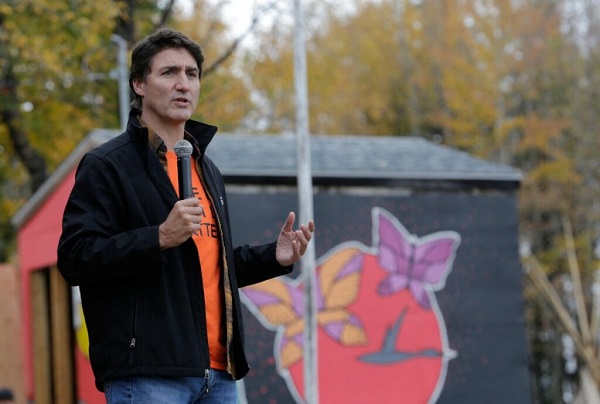
From EnergyNow.ca
By Rod Nickel, Nivedita Balu, and Alistair Bell
Trudeau’s government will release its budget April 16 and has said it will include plans to guarantee loans for Indigenous communities investing in major resource projects.
Canada’s First Nations are eyeing their biggest opportunities yet to invest in multi-billion-dollar energy projects from pipelines to power lines, hinging on Prime Minister Justin Trudeau keeping a promise this spring to make the deals easier to finance.
Trudeau’s government will release its budget April 16 and has said it will include plans to guarantee loans for Indigenous communities investing in major resource projects.
The government, which is trying to cut greenhouse gas emissions, has not said whether oil and gas projects will be included but if they are then they would represent some of the biggest Indigenous investment opportunities, from the government-owned Trans Mountain oil pipeline to TC Energy’s Coastal GasLink pipeline.
At least 38 Canadian energy projects were announced with Indigenous investment between 2022 and 2024, ranging in value from C$13 million to C$14.5 billion ($10.69 billion), according to the Fasken law firm, which has worked on some of the projects.
Enbridge is willing to sell Indigenous stakes in all types of assets, including North America’s biggest oil pipeline network, the Mainline, said executive vice-president of liquids Colin Gruending, adding that a Mainline deal would be complex because it crosses the Canada-U.S. border.
“Being open to all forms of energy, I think that’s important,” Gruending said of the federal guarantee. “If we’re going to involve more nations quicker, we need to open it up.”
The federal government will update next steps for a loan guarantee program in its budget, said Katherine Cuplinskas, spokesperson for the finance minister. She did not answer questions about the program’s dollar value or whether it would include oil and gas projects.
For energy companies, Indigenous partnerships provide capital infusions and a way to speed projects through approval from provincial governments that in some cases require First Nations equity.
A federal loan guarantee would allow First Nations to borrow at favorable rates, enabling them to profit, said Niilo Edwards, CEO of First Nations Major Projects Coalition, an Indigenous-owned organization that is advising First Nations on 17 projects worth a combined C$40 billion.
“A lot of (First Nations) are presented major investment opportunities that may be in the hundreds of millions of dollars and just don’t have the capital themselves,” Edwards said.
Alberta, Saskatchewan and Ontario offer provincial guarantees and British Columbia is developing one.
Banks already profit from advising and lending to First Nations and energy companies on deals but are eager for a federal guarantee to free up capital on a bigger scale.
“Provincial/federal loan guarantee programs with clear parameters could create a powerful force for accelerating capital into Indigenous-led projects,” said Michael Bonner, head of Canadian business banking at Bank of Montreal.
Many recent First Nations resource deals involve electricity and renewable energy.
BC Hydro is talking with an Indigenous coalition about buying 50% of its northwest transmission line expansion.
Wind and solar deals are also happening, such as Greenwood Sustainable Infrastructure’s C$200-million solar farm in Saskatchewan, announced in January, which will be at least 10% owned by Ocean Man First Nation.
Spain-based EDP Renewables, which built an Ontario wind farm in 2021 with 50.01% ownership by Piwakanagan First Nation, has multiple Canadian projects under development and is looking for more.
With First Nations knowledge and support, projects advance faster, said EDP North American CEO Sandhya Ganapathy. “Canada is super-high on our radar.”
(Reporting by Rod Nickel in Winnipeg, Manitoba and Nivedita Balu in Toronto Editing by Alistair Bell)
-

 Censorship Industrial Complex1 day ago
Censorship Industrial Complex1 day agoNow We Are Supposed to Cheer Government Surveillance?
-

 Alberta1 day ago
Alberta1 day agoRed Deer Doctor critical of Alberta’s COVID response to submit report to Danielle Smith this May
-

 COVID-192 days ago
COVID-192 days agoInquiry shows Canadian gov’t agencies have spent $10 million on social media ads for COVID jabs
-

 conflict1 day ago
conflict1 day agoCol. Douglas Macgregor torches Trump over support for bill funding wars in Ukraine and Israel
-

 Business12 hours ago
Business12 hours agoDon’t be fooled by high-speed rail
-

 Alberta12 hours ago
Alberta12 hours agoActivity-Based Hospital Funding in Alberta: Insights from Quebec and Australia
-

 Business2 days ago
Business2 days agoFederal government’s ‘fudget budget’ relies on fanciful assumptions of productivity growth
-

 Health2 days ago
Health2 days agoTransgender activists are threatening the author of scathing UK report on child ‘sex changes’

